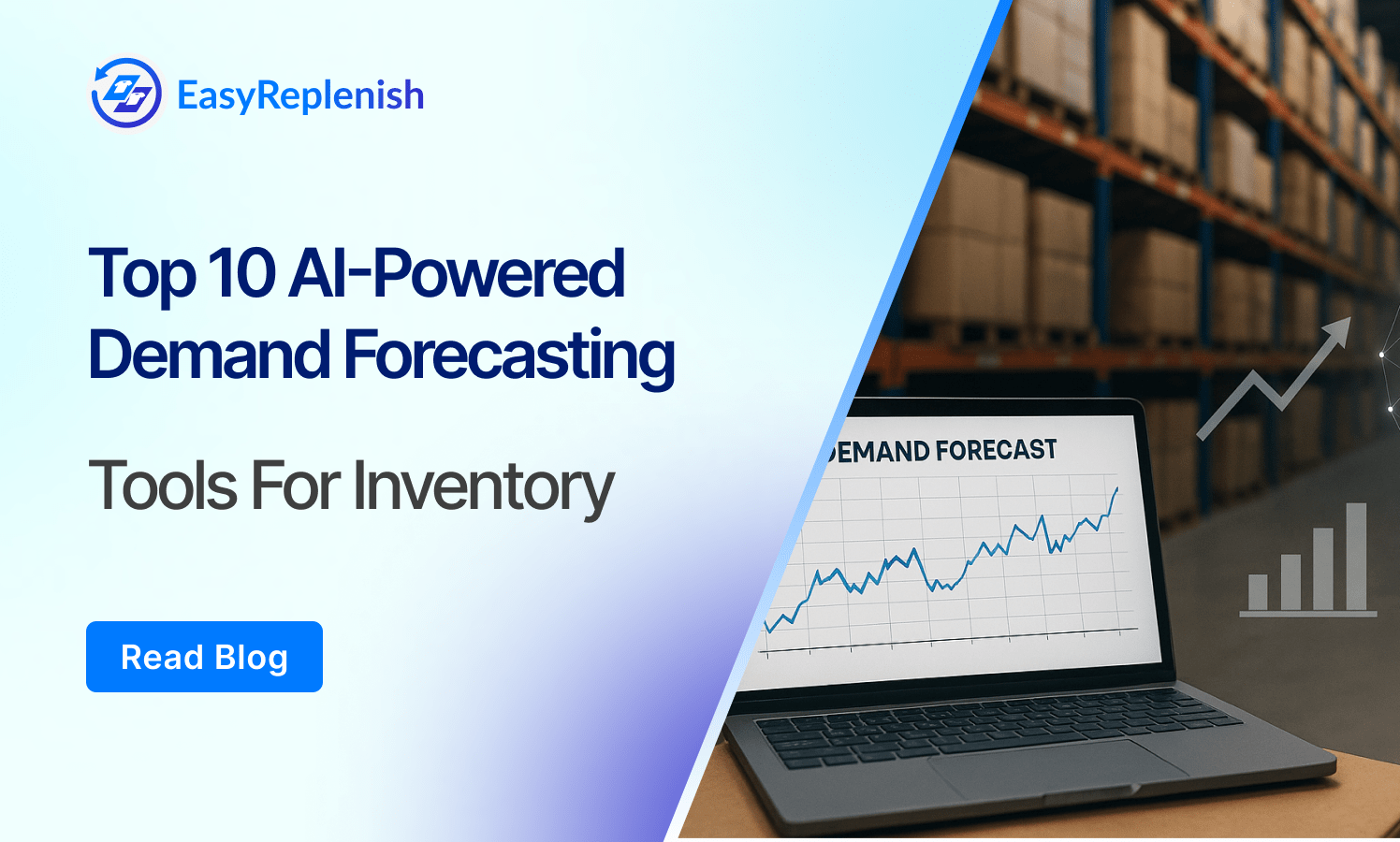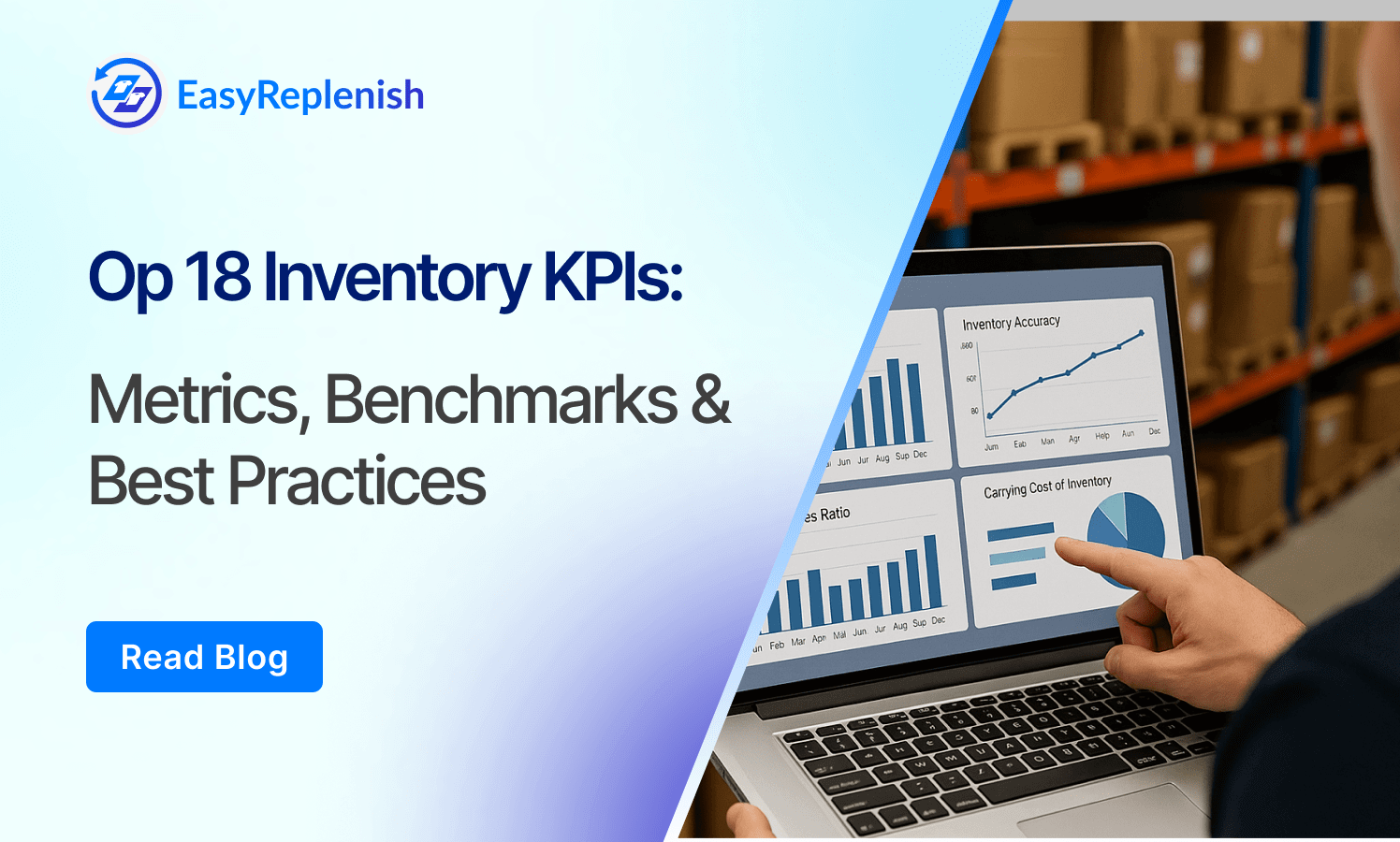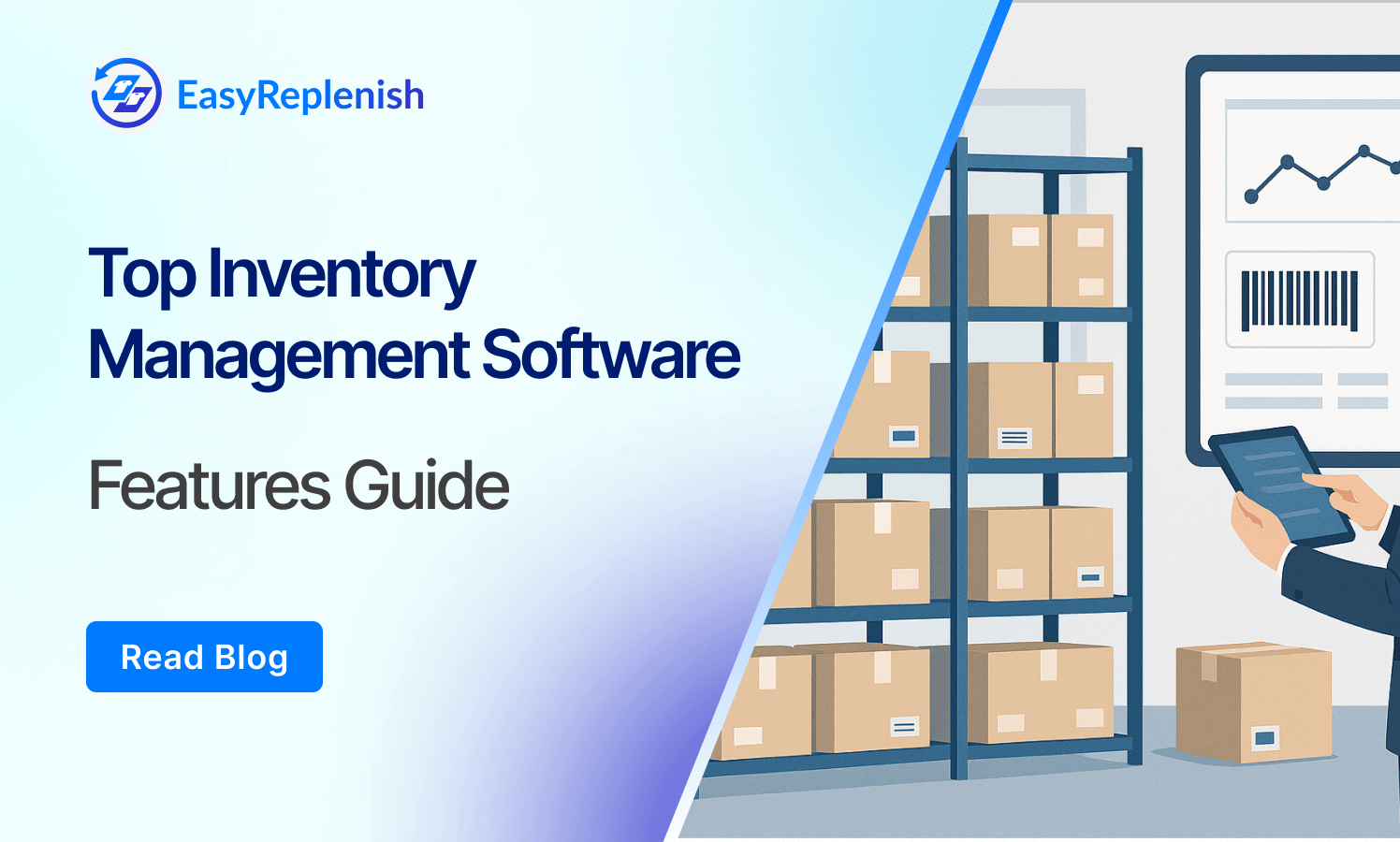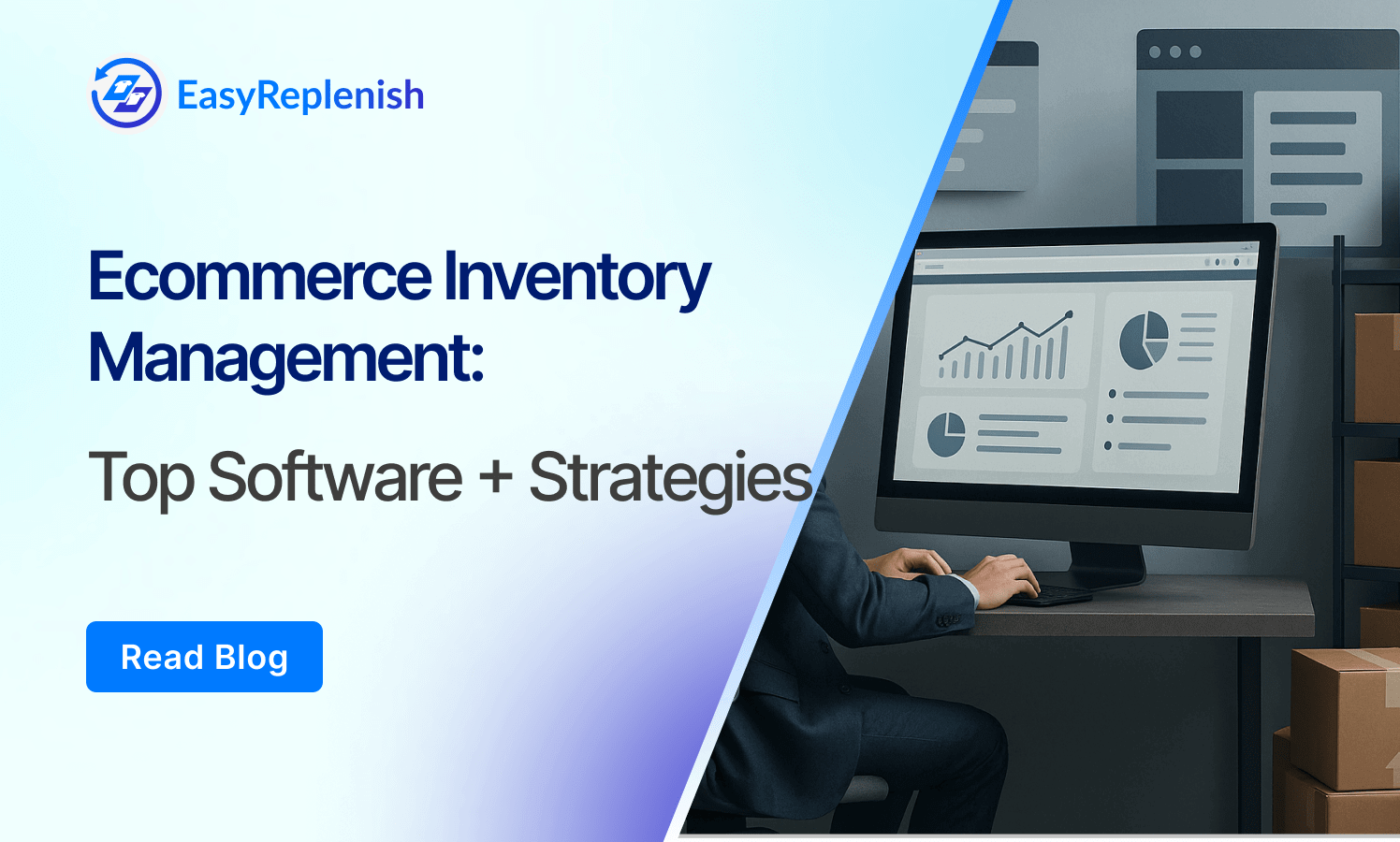Automated Inventory Management: How It Works, Tools & Implementation
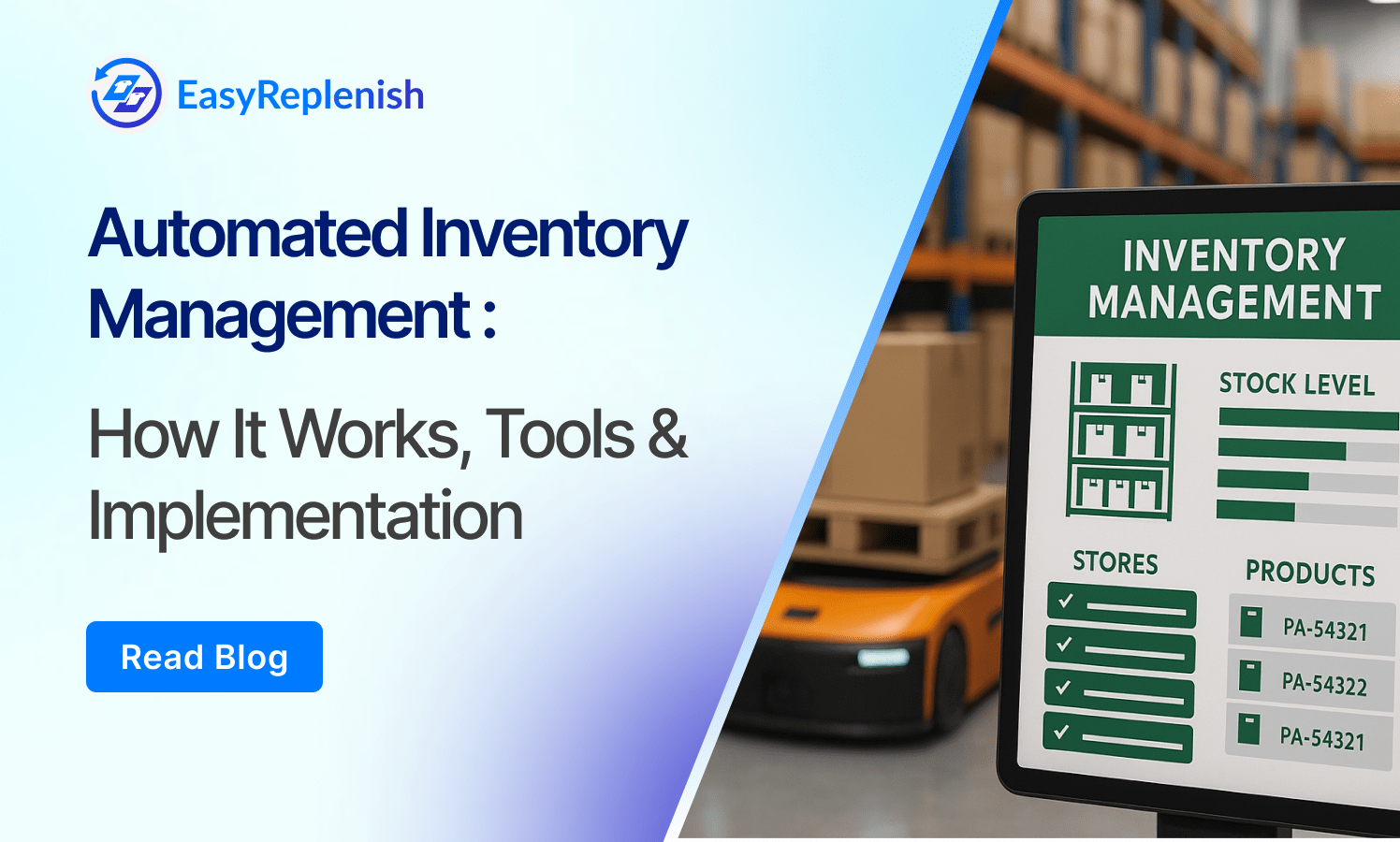
Automated inventory management is no longer a luxury—it’s a competitive necessity. In a market where demand patterns shift quickly and customers expect faster fulfillment, relying on manual tracking or static spreadsheets creates costly blind spots. Automation uses integrated software, real-time data capture, and AI-driven forecasting to give businesses live visibility into stock levels, movement, and demand signals—reducing errors, avoiding overstock and stockouts, and aligning inventory with actual market behavior.
For modern retailers, D2C brands, and B2B distributors, the impact goes beyond operational efficiency. Automated systems connect purchasing, sales, and fulfillment in a single ecosystem, enabling dynamic replenishment, multi-location synchronization, and accurate demand planning at scale. This allows companies to shift from reactive stock control to proactive inventory optimization—turning inventory from a static cost center into a strategic growth driver.
What Is Automated Inventory Management?
Automated inventory management is the use of technology—typically software integrated with scanners, sensors, and AI—to track, manage, and control stock without constant human intervention. Instead of relying on spreadsheets or manual counts, the system updates inventory data in real time as sales happen, stock is received, or products are moved.
The real value lies in its ability to connect multiple business functions—purchasing, warehousing, sales, and fulfillment—into a single, live inventory ecosystem. This means reordering can happen automatically when stock drops below a set threshold, discrepancies can be flagged instantly, and decision-making can be driven by actual demand patterns rather than guesswork. For fast-moving industries like retail, D2C, and manufacturing, this automation directly translates into fewer stockouts, reduced holding costs, and better cash flow management.
Key Features of a Modern Automated Inventory System
An effective automated inventory management system isn’t just about replacing manual processes with software—it’s about creating a data-driven ecosystem that ensures the right product is available in the right place, at the right time, with minimal cost and maximum accuracy. For B2B, retail, and D2C businesses, understanding each core component is essential to maximizing ROI and avoiding costly blind spots.
1. Centralized Inventory Dashboard
A centralized dashboard acts as the command center for all inventory data—aggregating stock levels, sales velocity, supplier lead times, and fulfillment metrics in one interface. Instead of juggling multiple systems, businesses can make faster, data-driven decisions and reduce discrepancies caused by siloed reporting. For scaling D2C or B2B operations, this unified visibility is critical for controlling costs and avoiding operational blind spots.
2. Real-Time Stock Level Updates
Automated systems sync inventory counts instantly across sales channels, warehouses, and marketplaces. This eliminates the lag that causes overselling or stockouts, especially during high-demand periods like flash sales or seasonal peaks. With real-time sync, even sudden changes—returns, cancellations, or bulk orders—are reflected immediately, keeping customer promises intact.
3. Demand Forecasting & Predictive Analytics
By analyzing historical sales, seasonal patterns, promotions, and market trends, predictive models can estimate future demand with high accuracy. For example, AI-driven forecasting can adjust reorder points dynamically based on emerging buying trends, helping businesses avoid excess inventory without missing revenue opportunities.
4. Multi-Warehouse Management
For brands with distributed fulfillment centers, automated systems balance stock allocation across locations to reduce shipping costs and delivery times. Advanced tools even suggest optimal warehouse fulfillment based on customer location, shipping cost, and available stock, enhancing both margins and customer experience.
5. Barcode & RFID Integration
Barcode scanning streamlines pick-pack-ship workflows, while RFID tags enable near-instant bulk scanning and location tracking. This minimizes human error, accelerates cycle counts, and provides granular SKU movement history—critical for compliance-heavy industries like pharmaceuticals and food.
6. Automated Purchase Orders
When stock levels hit predefined reorder points, the system can auto-generate purchase orders, send them to approved suppliers, and track fulfillment status without manual intervention. This reduces procurement delays and ensures consistent product availability, even during supplier lead time fluctuations.
7. Batch & Lot Tracking
Batch and lot tracking allow businesses to trace products back to manufacturing or sourcing details. This is crucial for industries where expiration dates, compliance, or recall readiness are non-negotiable. Automation ensures accurate labeling, faster recalls, and better quality control.
8. Returns & Reverse Logistics Management
An automated returns process can instantly update stock levels, trigger quality checks, and re-route items for resale, repair, or recycling. This shortens the time between return initiation and resale, recapturing value from returned goods while keeping customers informed at each step.
How Inventory Management Automation Works
Inventory management automation works by integrating data, sensors, and intelligent algorithms to eliminate manual stock tracking and decision-making. At its core, it connects sales channels, warehouses, suppliers, and forecasting systems into one synchronized ecosystem—ensuring every movement of inventory is tracked and acted upon in real time.
1. Data Integration & Synchronization
Automation begins with connecting all sales and operational channels—POS systems, e-commerce platforms, ERP software, and warehouse management systems—into a single source of truth. Every transaction, whether online or offline, instantly updates stock records to prevent overselling and understocking.
2. Real-Time Inventory Tracking
Technologies like RFID tags, IoT-enabled scales, and barcode scanners continuously feed data into the system. As products move in or out of storage, the system updates stock levels automatically, enabling precise visibility without manual cycle counts.
3. Rule-Based Automation & Triggers
Businesses can define automated triggers—such as reorder points, safety stock levels, or demand thresholds. When inventory drops below a set level, the system automatically generates purchase orders or allocates stock from other warehouses.
4. Predictive Analytics & AI Forecasting
Advanced systems use historical sales data, seasonality trends, and market signals to predict future demand. This allows businesses to adjust procurement cycles, avoid overstocking, and prepare for peak demand without guesswork.
5. Workflow Automation Across Departments
Inventory automation also streamlines cross-departmental workflows. For example, when a sales order is placed, it automatically updates warehouse pick lists, adjusts procurement schedules, and notifies accounting for invoice generation—without human intervention.
6. Multi-Warehouse & Multi-Channel Coordination
Automation ensures that inventory is distributed intelligently across warehouses and sales channels. It factors in customer location, real-time demand patterns, shipping costs, and available stock to route orders for the fastest, most cost-effective fulfillment.
7. Continuous Feedback Loop
Each sale, return, or stock movement feeds data back into the system. This ongoing cycle sharpens demand forecasts, fine-tunes reorder points, and helps identify the most reliable suppliers, making the system smarter over time.
How to Implement Automated Inventory Management in Your Business
1. Assess Current Inventory Challenges
Start by identifying pain points—are you overstocking certain SKUs, running out of bestsellers, or spending too much time on manual counts? Use sales data, historical demand, and supplier lead times to map where inefficiencies exist. This diagnostic step ensures automation targets the most costly bottlenecks first.
2. Choose the Right System for Your Needs (SMB vs Enterprise)
Small to mid-sized businesses often need lightweight, easy-to-deploy systems that handle core functions like real-time stock tracking, low-stock alerts, and simple integrations. Enterprises typically require advanced forecasting, multi-warehouse visibility, and robust analytics. Matching features to your operational scale prevents overspending or under-equipping.
3. Integrate with Existing Platforms (POS, ERP, e-commerce)
Your automated system should seamlessly connect with the platforms you already use. A good integration eliminates duplicate data entry, syncs inventory across online and offline channels, and updates stock counts in real-time. This avoids stockouts and overselling, especially in omnichannel retail environments.
4. Train Your Team & Create SOPs
Even the most advanced system will underperform if the team doesn’t know how to use it effectively. Provide hands-on training and create clear SOPs (Standard Operating Procedures) for tasks like updating product info, processing returns, or handling exceptions flagged by the system. This builds consistency and reduces errors.
5. Monitor, Optimize, and Scale
Automation isn’t a “set and forget” process. Regularly review analytics to identify trends, refine reorder points, and optimize safety stock levels. As your business grows—whether by product lines, sales channels, or locations—ensure your system can scale without major infrastructure changes.
Top Automated Inventory Management Software
1. NetSuite ERP
NetSuite ERP is a comprehensive cloud-based enterprise resource planning system designed for mid-sized to large businesses. Its inventory management module offers real-time visibility into stock levels across multiple warehouses, automated reorder management, and AI-powered demand forecasting. The platform integrates seamlessly with finance, CRM, and ecommerce systems, enabling end-to-end operational automation. Its scalability makes it a preferred choice for companies looking to grow without switching systems.
2. EasyReplenish
EasyReplenish is a modern, AI-driven automated inventory management platform designed specifically for e-commerce brands and D2C businesses. It focuses on smart replenishment by leveraging real-time sales data and demand forecasting to optimize stock levels without manual intervention. EasyReplenish integrates seamlessly with popular e-commerce platforms like Shopify, WooCommerce, and marketplaces, enabling multi-channel inventory synchronization. Its intuitive dashboard provides actionable insights on reorder points, supplier lead times, and slow-moving SKUs, helping brands reduce stockouts, minimize holding costs, and improve cash flow. With flexible automation rules and scalable architecture, EasyReplenish empowers growing businesses to maintain optimal inventory without the complexity of traditional ERP systems.
3. Zoho Inventory
Zoho Inventory is a cost-effective solution for small to medium businesses aiming to automate core inventory tasks. It supports barcode scanning for quick stock updates, real-time stock alerts, and order management across multiple channels. Zoho’s ecosystem also allows integration with Zoho Books, CRM, and other productivity tools, making it ideal for startups and businesses scaling their operations.
4. Cin7
Cin7 offers an all-in-one inventory and point-of-sale system with built-in warehouse management capabilities. It supports automated replenishment based on preset thresholds, batch tracking, and electronic data interchange (EDI) with suppliers. Cin7’s ability to integrate with over 700 applications makes it highly flexible for retailers and distributors operating across multiple channels and locations.
5. Fishbowl Inventory
Fishbowl Inventory is known for its strong manufacturing and warehouse management features, designed to complement QuickBooks and Xero accounting software. It automates inventory tracking through barcode scanning, supports work orders, and manages reorder points automatically. Fishbowl is particularly suited for businesses requiring production tracking alongside inventory control.
Top Automated Inventory Management Hardware
1. Zebra Barcode Scanners
Zebra offers a range of rugged, high-performance barcode scanners designed for warehouse and retail environments. Their scanners support 1D and 2D barcode formats and are capable of scanning quickly in high-volume operations. These devices reduce errors by automating product identification and support wireless connectivity for real-time inventory updates.
2. Honeywell Mobile Computers
Honeywell’s handheld mobile computers combine barcode scanning, data collection, and inventory management software in one device. These rugged devices are built to withstand harsh environments and are widely used for stock counting, order picking, and receiving. The real-time data capture capability helps eliminate manual entry mistakes and accelerates warehouse workflows.
3. RFID Readers
RFID readers enable wireless scanning of RFID tags attached to products or pallets. Unlike barcode scanners, RFID readers can scan multiple items simultaneously without line-of-sight, significantly speeding up inventory audits and reducing labor costs. They are especially useful in large warehouses and retail distribution centers managing thousands of SKUs.
4. Automated Storage & Retrieval Systems (AS/RS)
AS/RS are robotic systems that automatically store, organize, and retrieve inventory within warehouse racks. These systems maximize storage density and increase picking speed, reducing labor costs and errors. Integration with warehouse management software allows seamless tracking and coordination of inventory movements.
5. Weighing Scales with IoT Sensors
Smart weighing scales equipped with IoT sensors automatically update inventory systems when stock is added or removed. These are particularly useful for businesses handling bulk or loose inventory such as food producers and chemical suppliers. By automating stock measurement, they improve accuracy and enable real-time inventory visibility.
FAQs
Q1. What is automated inventory management and how does it work?
Automated inventory management uses integrated software and hardware tools to track stock levels, sales, and replenishment triggers in real time. It eliminates manual inventory updates by syncing data across sales channels, warehouses, and suppliers automatically.
Q2. Why is automated inventory management important for e-commerce brands?
E-commerce brands face dynamic demand and multiple sales channels. Automation ensures accurate stock visibility, prevents overselling, speeds up order fulfillment, and optimizes cash flow by maintaining optimal inventory levels without human error.
Q3. Which technologies enable inventory automation?
Core technologies include barcode scanning, RFID, IoT sensors, AI-driven demand forecasting, and cloud-based inventory management platforms that integrate with POS, ERP, and e-commerce systems.
Q4. Can small and medium-sized businesses implement automated inventory management effectively?
Yes. Many cloud-based solutions are designed for SMBs with affordable pricing and scalable features, allowing them to reduce manual errors and improve inventory accuracy as they grow.
Q5. How does automated inventory management support multi-warehouse and multi-channel operations?
It synchronizes inventory data across all warehouses and sales platforms in real time, enabling intelligent stock allocation, optimized shipping decisions, and consistent stock availability across channels.
Q6. What are common challenges when adopting automated inventory management?
Challenges include integrating with legacy systems, training staff to use new tools, ensuring data accuracy during migration, and selecting software that fits current and future operational needs.
Q7. Is data security a concern with automated inventory management software?
Reputable inventory management platforms implement strong encryption, access controls, and comply with data privacy standards to protect business and customer data.
Q8. How does AI improve demand forecasting in inventory management?
AI analyzes historical sales data, market trends, seasonality, and promotions to predict future demand accurately, allowing businesses to adjust reorder points and reduce excess stock or stockouts.

.png)
